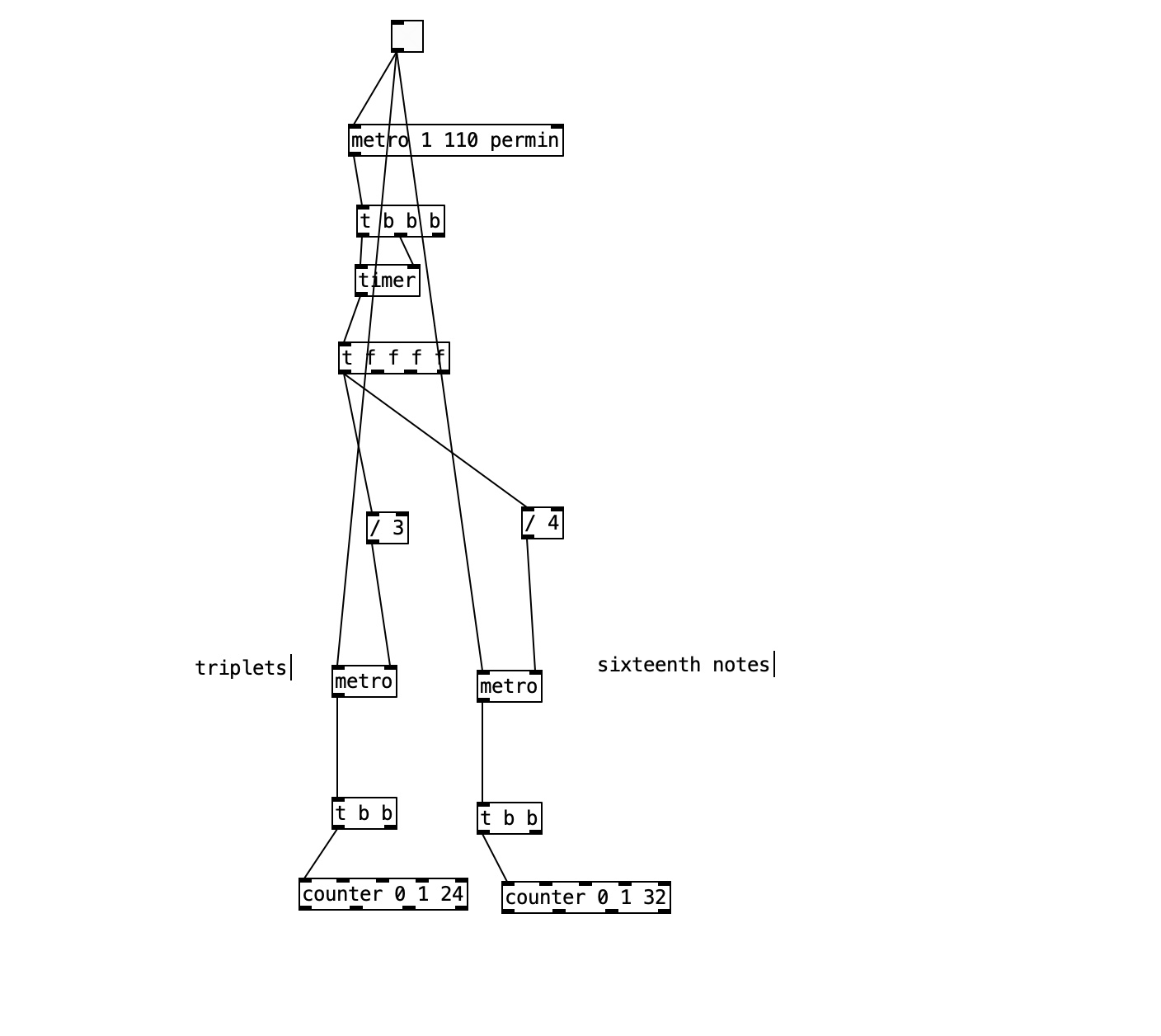-
nicnut
posted in technical issues • read moreThere is a collection of objects called "Sound Design Toolkit," both for Max and Pd. It has a lot of great patches in it. Things like running water, bubbles, engines, scraping sounds. I use it all the time. If you do an internet search you can find some links. I don't know what the latest version is. It's also in the Max collections tab for Max
-
nicnut
posted in technical issues • read moreHi @whale-av
This is an amazing patch you shared. I think in your application where it's randomly skipping playhead locations it works very well. Since I am kind of scrolling through a patch it didn't seem to work great when I applied the same principles. maybe there isn't really a way to do what I am asking. I will keep messing around with this. ]vline~] is a good idea to duck the volume.
-
nicnut
posted in technical issues • read moreHi,
I have a patch that is using a phasor~ to play an audio file. I like using this because I can reset where the phasor, between 0 and 1, and scroll through the audio file.
The issue is the way I am doing it is causing a lot of distortion anytime I move the playhead of the phasor. I attached a video link so people could hear what I am talking about.
I also am including the patch so you can see what's going on. I guess this is sort of a question of how I would take this idea into a granular level, instead of just playing an audio file.
Thanks, Nick
-
nicnut
posted in extra~ • read moreHi,
Did you ever manage to get ELSE on Dekken for Linux/ Raspberry Pi?
I have a Pi and ELSE doesn't show up at all in Dekken or in apt get.
I am on an older Pi, 4 model B Rev 1.4. running Debian 10. I Have Pd .56-1.
Let me know if you need help testing it out or something.
Nick
-
nicnut
posted in technical issues • read moreOK, So, for example, would you take two different audio files and play them both for 1000 milliseconds and, with your ears, compare where they are different or similar?
Is this what you imagined? If so that is doable.
-
nicnut
posted in technical issues • read moreDo you need to warp the tempo of a metro? Or the playback of an audio file? Or something else?
-
nicnut
posted in technical issues • read moreHi Alexandros and Jameslo.
Thanks for the suggestions. The 20 ms ramp down then ramp up works really well. It's completely silent. Thank You.
I am adding a screenshot as well.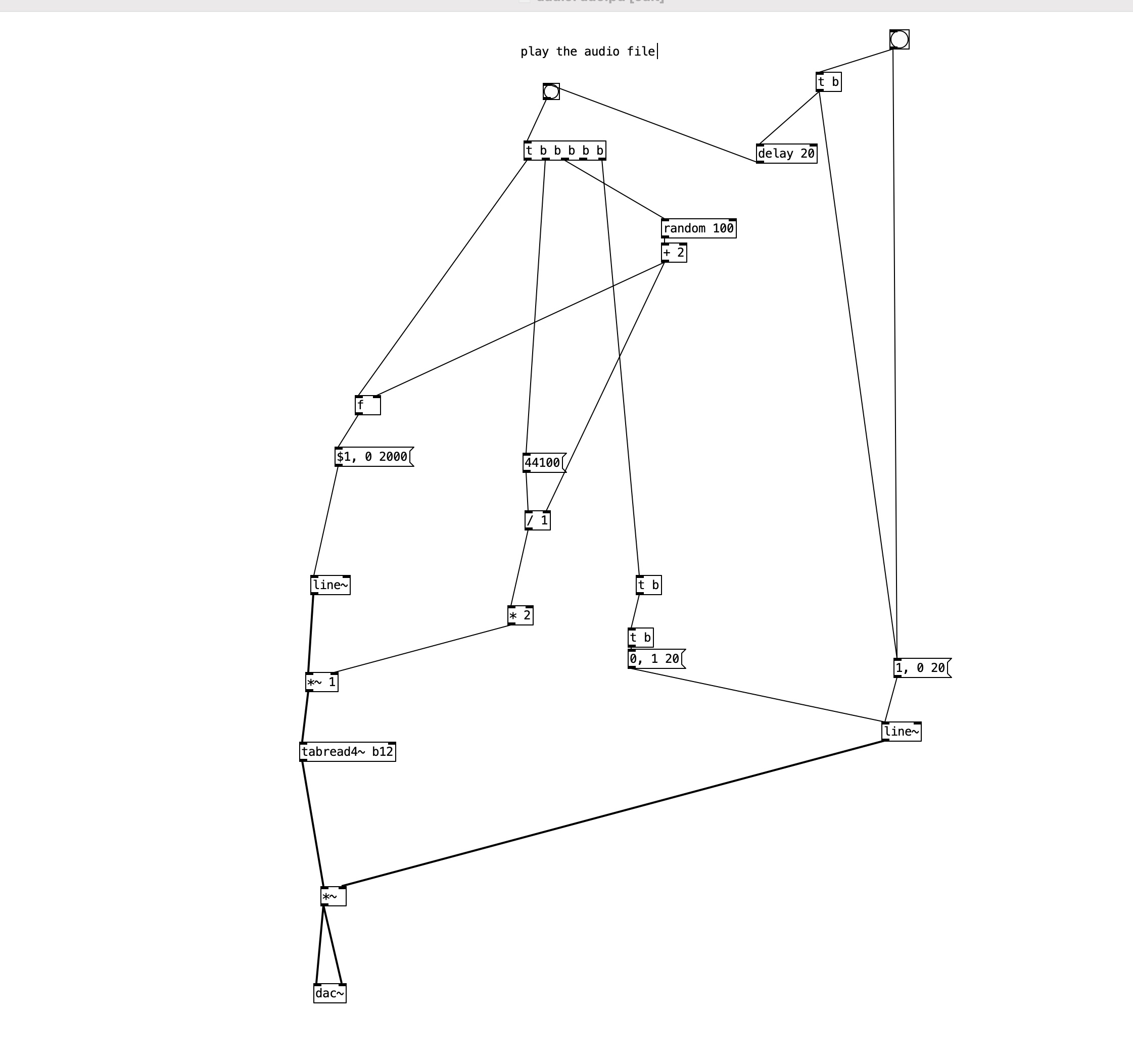
-
nicnut
posted in technical issues • read moreHi,
I am playing a sound file in reverse sometimes in a fast rhythm and I am getting a lot of clicks and pops.
My attempt to eliminate the clicks and pops is not so great.
I have a screen shot so you can see what I am doing.
When I bang the button an audio file is played for 2 seconds. If I press the button before the end of the 2 seconds I get a pop because the audio that was playing is cut off and the audio file playback jumps to another location and starts over.If you see in the red box on my screen shot, I am trying to use line~ to have the volume go to 0 and ramp back up to 1, but it degrades the sound quality at the beginning of the audio file playback. Also, I need to ramp down the volume to 0 first and then ramp the volume back up, and that is what I am missing in my version.
Can anyone please suggest a way to create a silent volume fade at the beginning of when the audio file is played? And it should account for the line~ being interrupted and the file being played again. Let me know if anyone has any suggestions. Thank You.
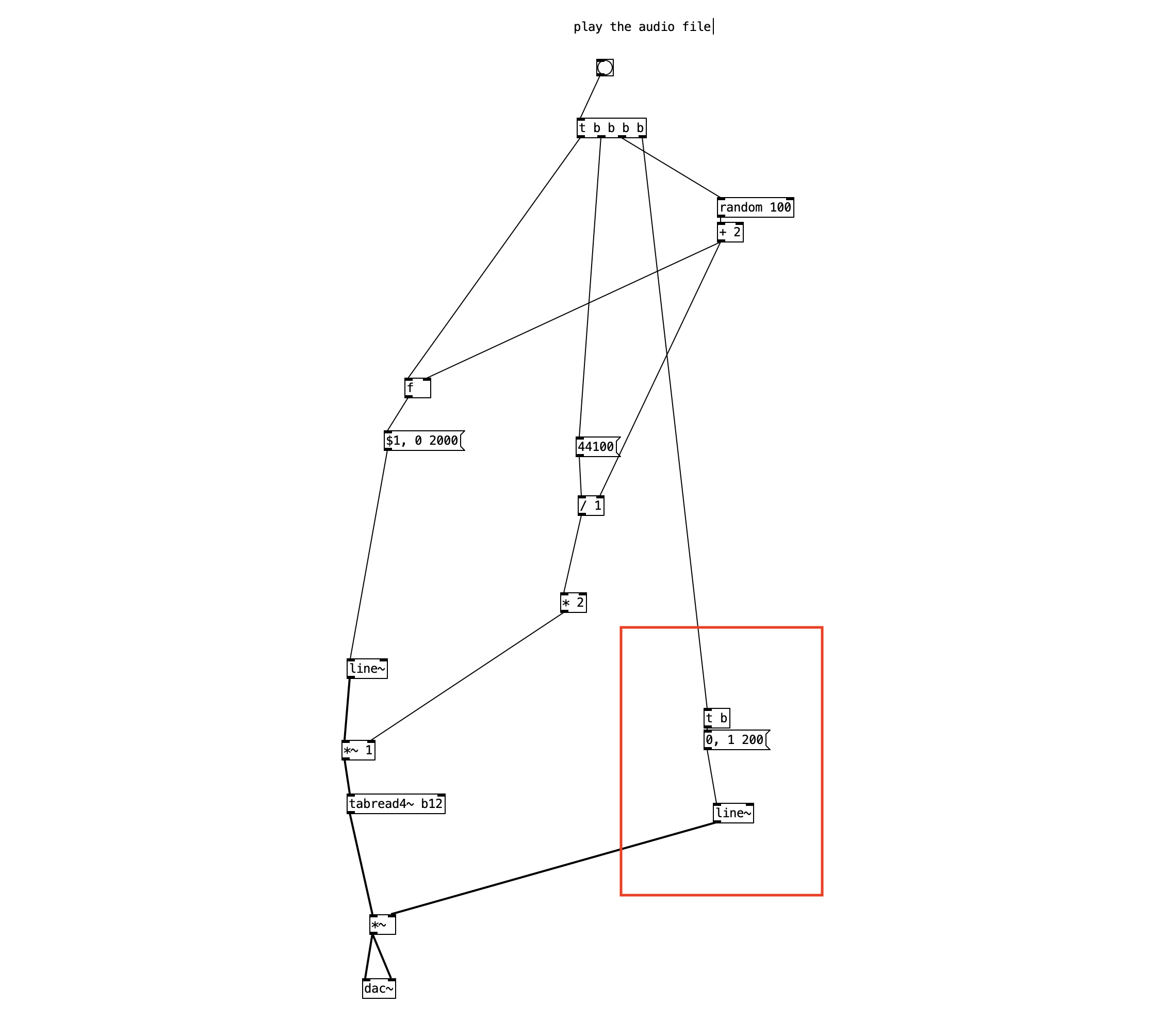
-
nicnut
posted in technical issues • read moreHi,
ddw_music, I think in our going back and forth I resolved my problem, so thank you for the banter. You are of course right that line~ and phaser~ can't separate pitch and time.
But I just had a revelation that I can't believe I never though of before. If I multiply the output of line~ by a number I can separate pitch and time.
I am including a screenshot of a patch I just tested this out on, and it works.
So, now that I have this figured out hopefully I can do the math and hopefully solve the rest, which is what would happen if I want to do random speeds, or start playback in the middle of the soundfile, but maintain the pitch.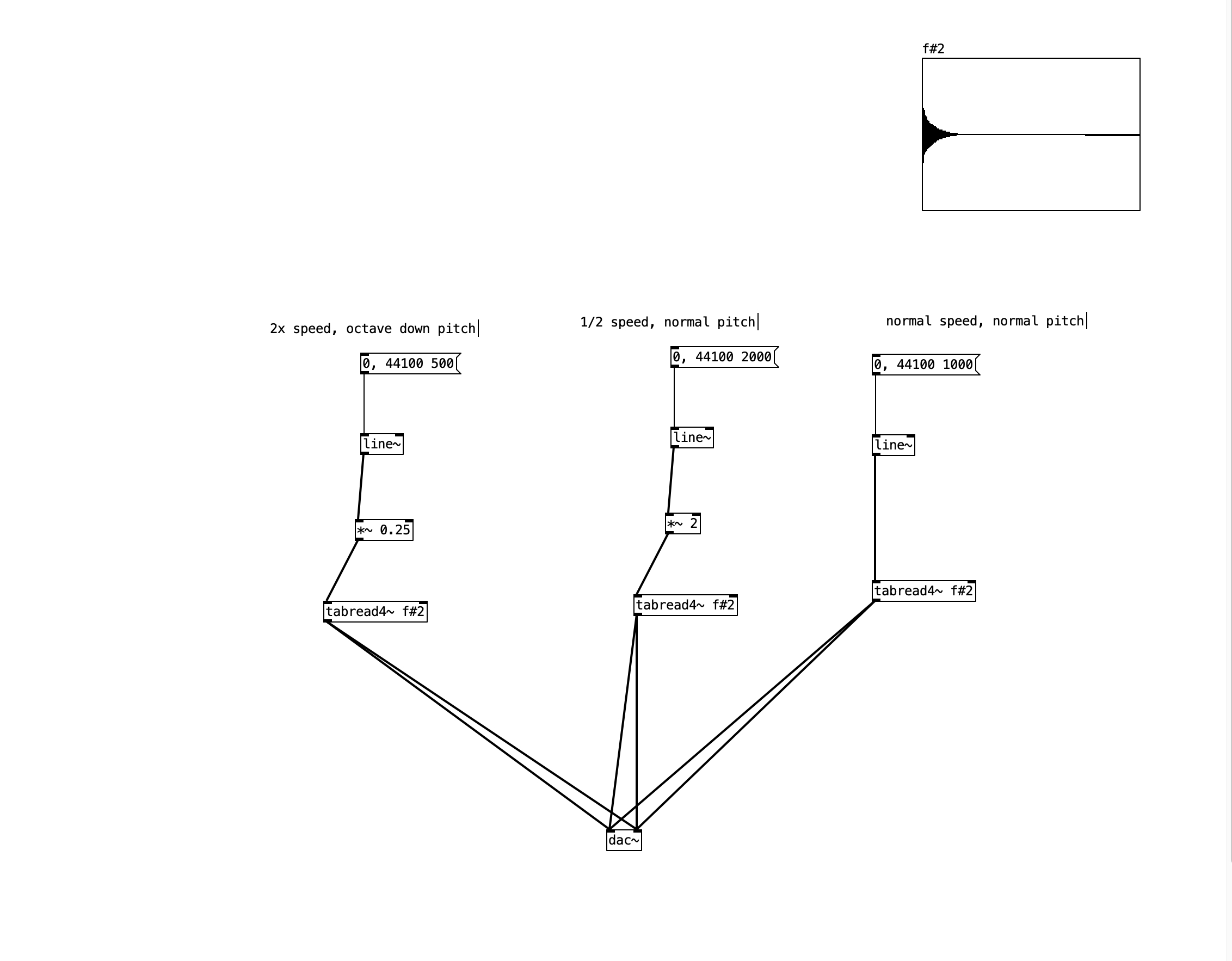
-
nicnut
posted in technical issues • read moreHI,
Ok, sorry to not be more specific. If you look at the screenshot in my last post there is a patch. There is a number box labeled "transpose." The first step is to put a value in there, 1 being the original pitch, .5 is an octave down, 2 is an octave up, etc.
After that you can change the frequency of the phasor in the other number box labled "change phasor frequency without changing pitch." This way, I can make the phasor frequency, say .5 and the transposition 2, which I don't think I can do using line~ with tabread4~.Does this make more sense? thanks,
-
nicnut
posted in technical issues • read moreHi ddw_music, thanks for taking the time to look into this.
I am attaching a simplified version of my patch.
If I pick the transposition first, then choose the phasor~ frequency second I can separate the pitch and the time, which is something I want to keep. I understand that making the time faster or slower changes the pitch. For what I am doing I want to keep the pitch the same but change the phasor speed.I tried using [<~] and [>~] to stop the phasor~ but Pd crashed. I might need to look into that more. So I switched to using snapshot~ with [<] and [.>]. I don't know how to separate pitch and time using line~.
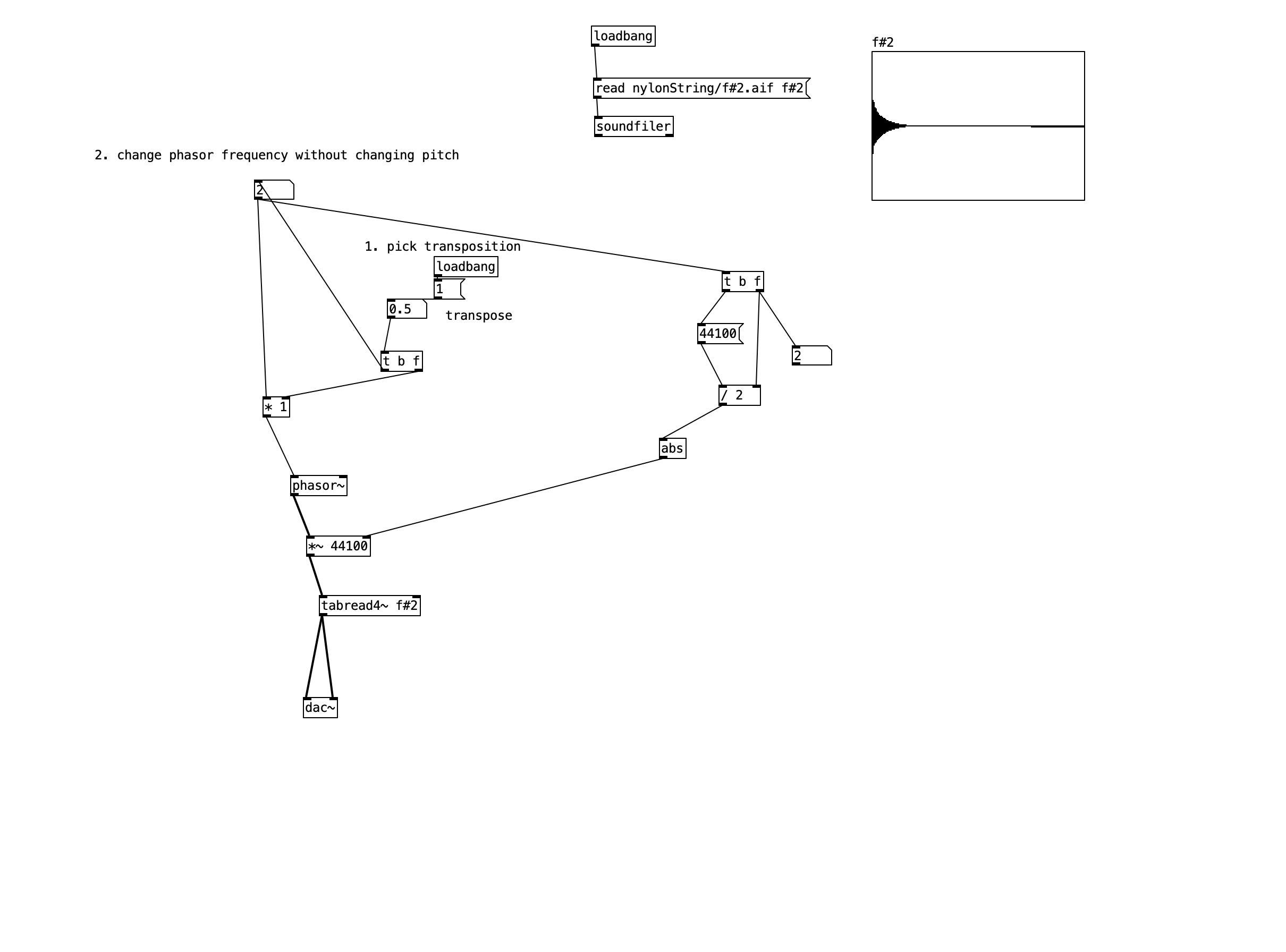
-
nicnut
posted in technical issues • read moreHi ddw_music.
Yes line~ would be better, but one thing I am doing is also playing the file for longer periods of time, by lowering the phaser~ frequency, and doing some math the transpose the pitch of the playback that I would like to keep. With line~ I don't know how to separate the pitch and the playback speed. If there is a way to do that using line~ then that is an option as well.
-
nicnut
posted in technical issues • read moreHi, I am trying to come up with a strategy to use phasor~ to control a tabread4~ object to play a sound file.
Ideally, I would want to have the file play randomly forward or backwards. Once the file has been played once I want the phasor~ to stop ( go to frequency 0).I am including a patch and a soundfile I am using for testing.
I am using a snapshot~ to see when the phasor~ has played through the file once and stop towards the end. This changes for forward or backward playback. This doesn't seem like the best way to do this so any suggestions with that would be appreciated.
Also, I want the file to play from a random start point, which I am doing by randomizing the phase of the phazor~. I don't think this is the best Idea either. I was trying to add a random amount after the phasor~ using {+~ 0] but it was changing the pitch of the playback. I want the pitch to not change.
If anyone has ideas to improve this patch please let me know.
thanks, Nick
test.zip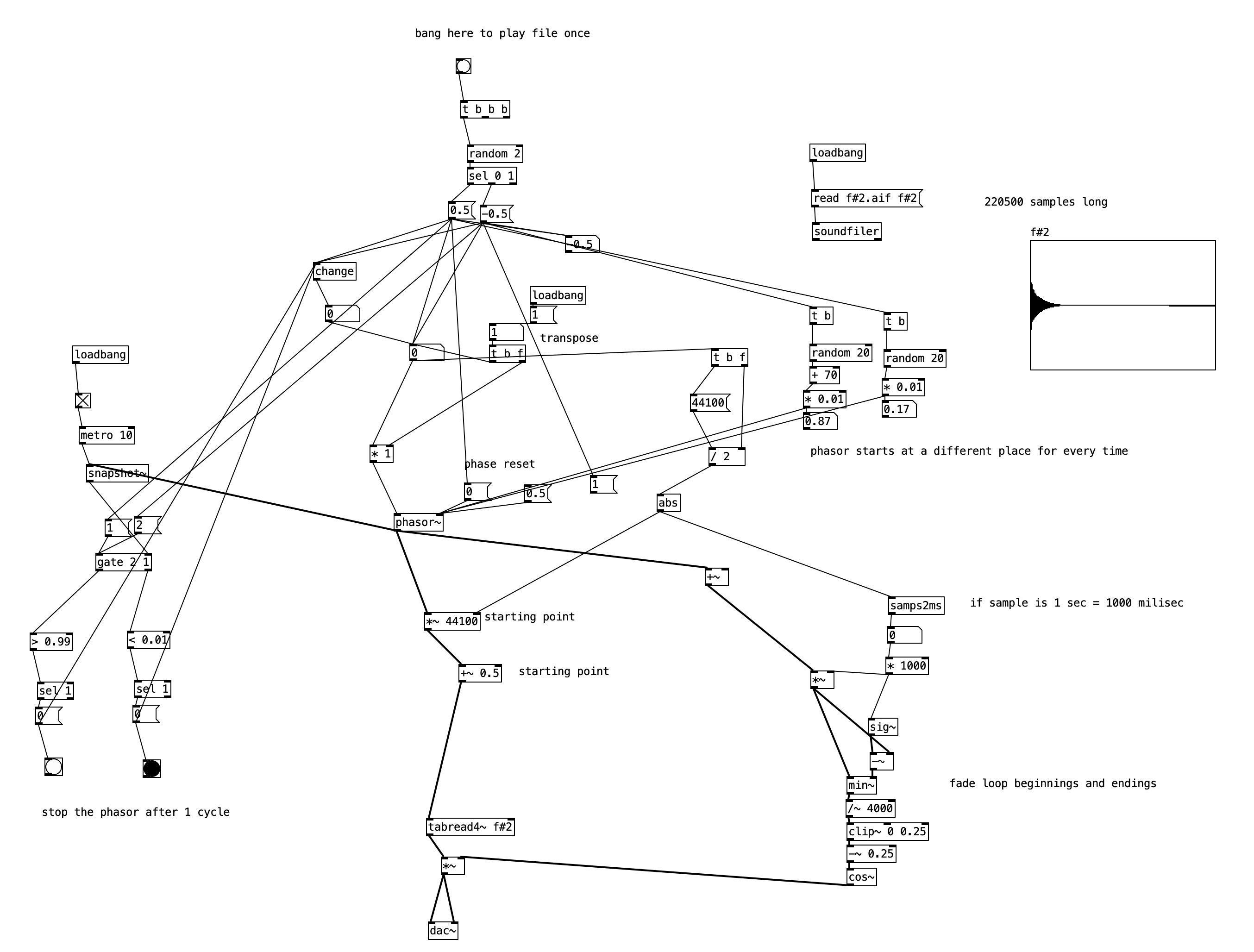
-
nicnut
posted in technical issues • read moreHi Everyone. Ok thanks for the information.
This is an image of what I got. It seems to work. I'll check function too
.
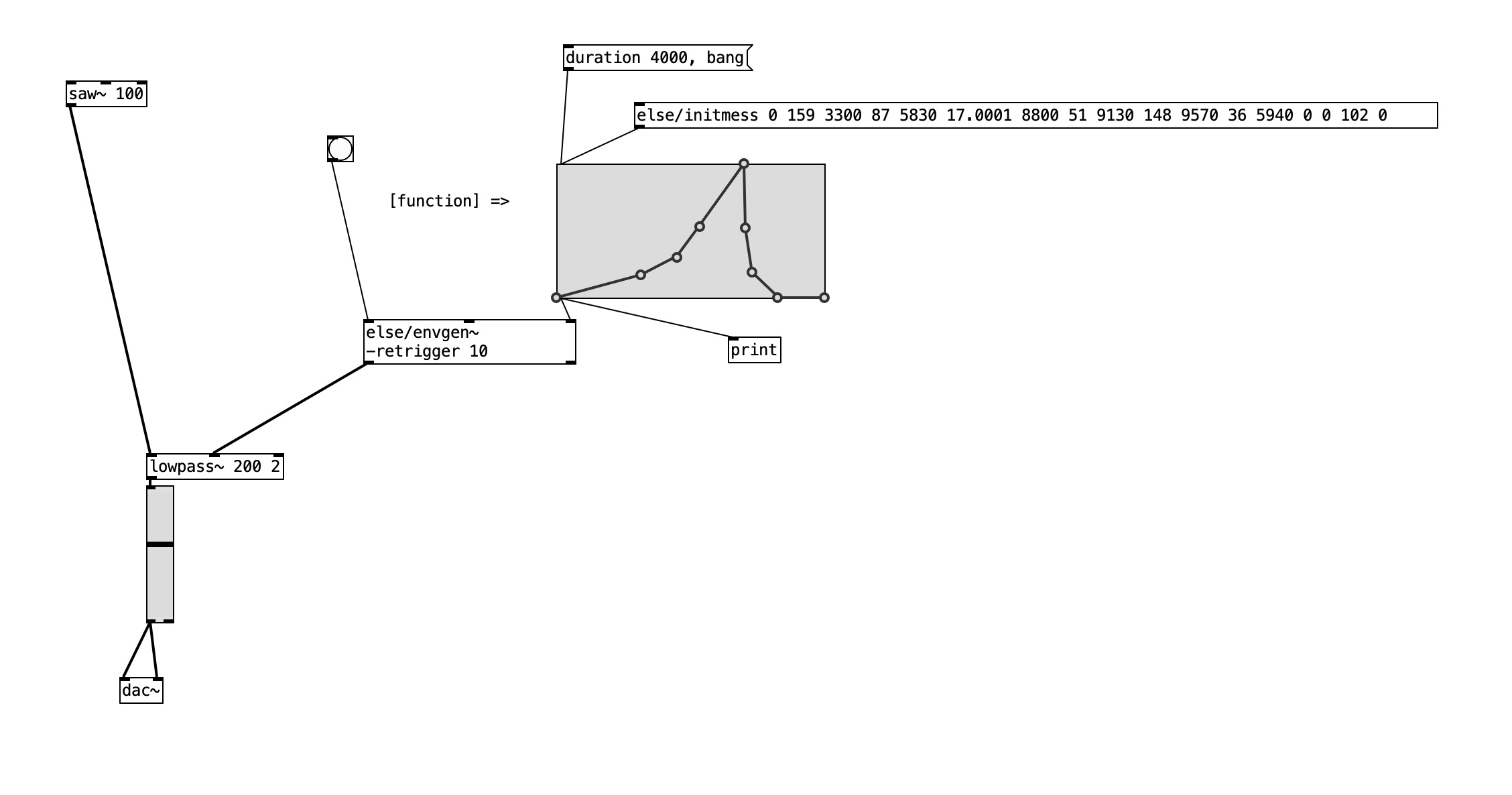
-
nicnut
posted in technical issues • read moreHi,
I started out using Max. In Max you can use a function object to control a line object, which can in turn control the frequency of a filter. I am always trying to do this in Pd and haven't found a way. I know I can use vline~ but it's time consuming to get my curve the way I want it.
Is there a way I can draw in a curve, using a function object or something else, and have it control the frequency of a filter? I am including an image of my latest failed attempt, but this is the idea.
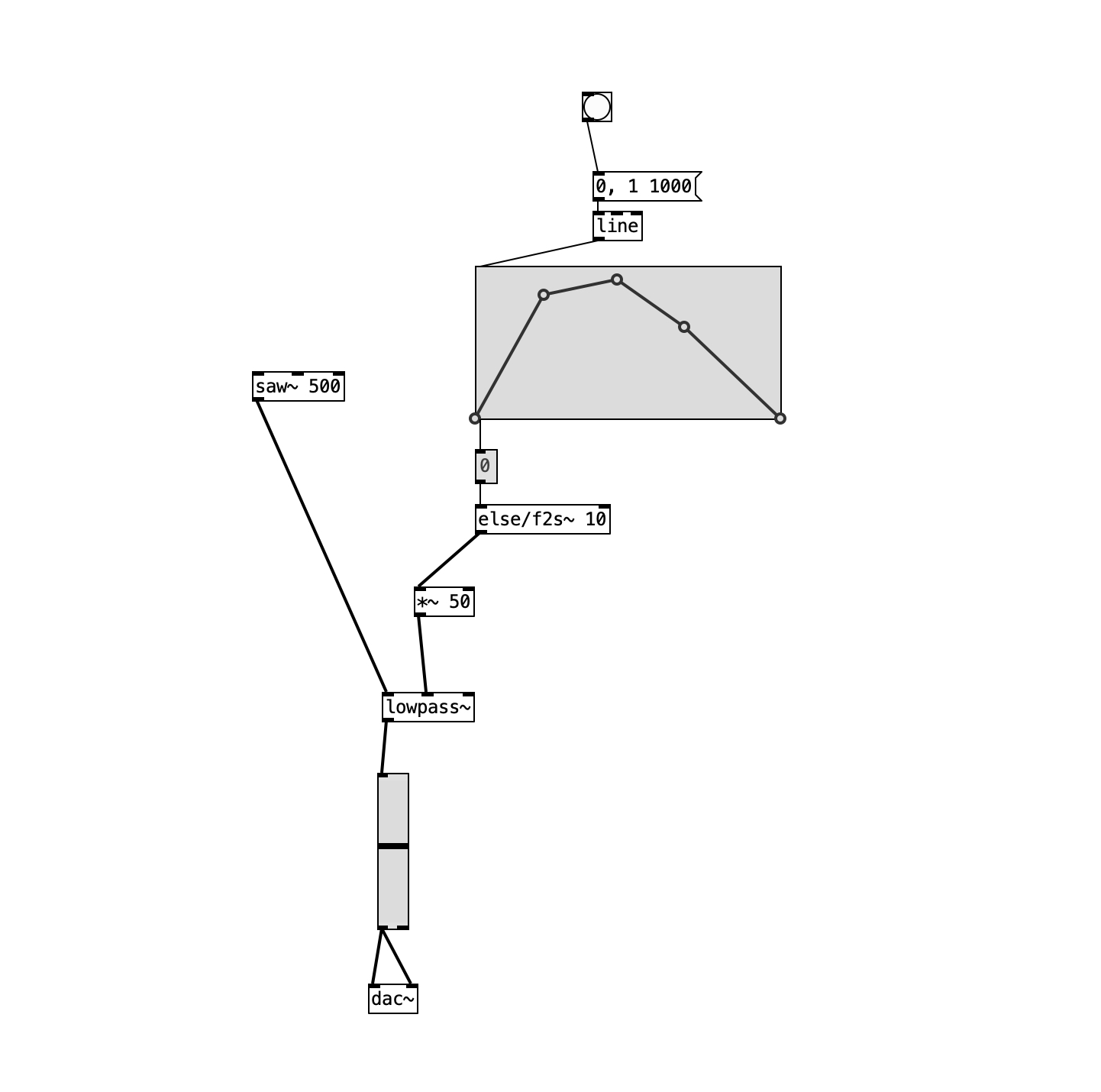
-
nicnut
posted in technical issues • read moreThank you both for the replies. Both of your solutions make sense. Seems like you both found a subdivision that was in common for both rhythms and based everything off that. Very cool, I can't believe I never have done this before. Thanks for your help!
Nick
-
nicnut
posted in technical issues • read moreHI,
I am trying to sync two metronomes, one playing triplets and one playing sixteenth notes.
It seems the get out of synch pretty quickly.Does anyone know how I could get them lined up? I am attaching a patch of the method I used plus a screen shot.
I also have a counter I am using from the cyclone library.thank you
-
nicnut
posted in technical issues • read moreHi PD-Pi,
I think that's a good suggestion. I should work on a different impulse that is more gentle to simulate a mallet.
What does the [1 5, 0 5 20 (. message going into vline mean? Does it go from 0 to 1 in 5 milliseconds, then to 0 from 5 to 20 milliseconds?
Thanks.

